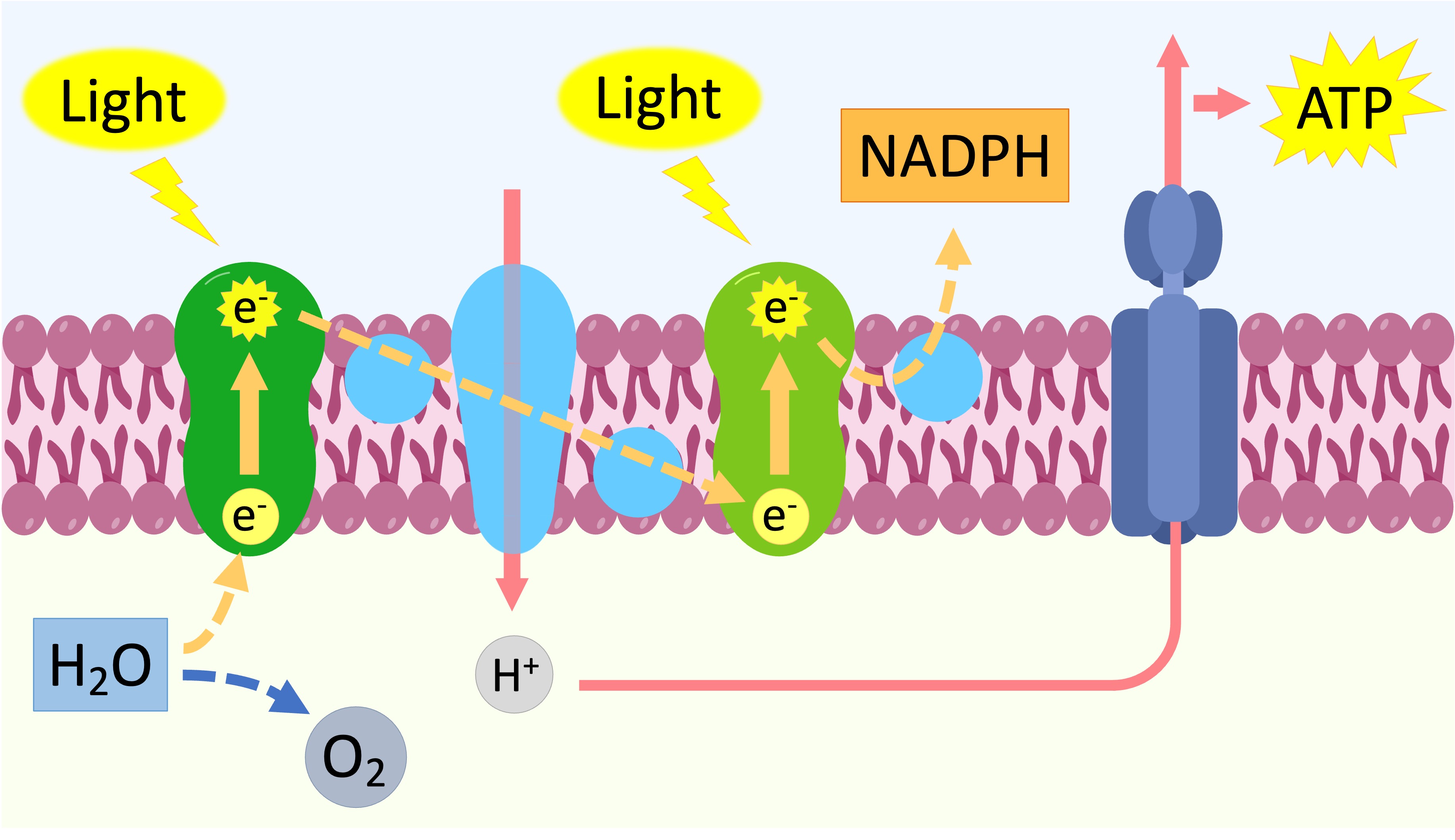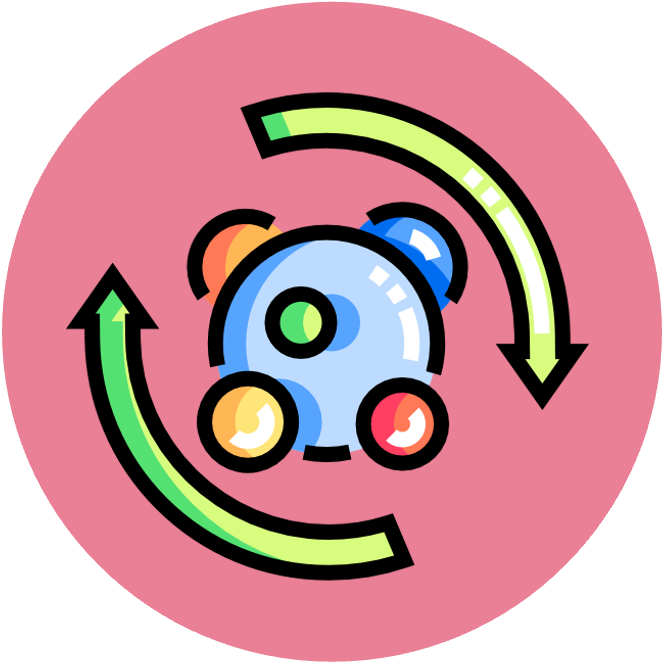

Photoreactions
The light dependent reactions use photosynthetic pigments (organised into photosystems) to convert light energy into chemical energy
-
The intermediate products of the light dependent reactions (ATP and NADPH) are then utilised by the light independent reactions
The light dependent reactions occur within specialised membrane discs called thylakoids
-
In plants, the thylakoid discs are organised into stacks called grana (singular = granum) within the chloroplasts
-
In cyanobacteria and single-celled algae, the thylakoids do not form grana (individual thylakoids are free-floating instead)
Thylakoids / Grana
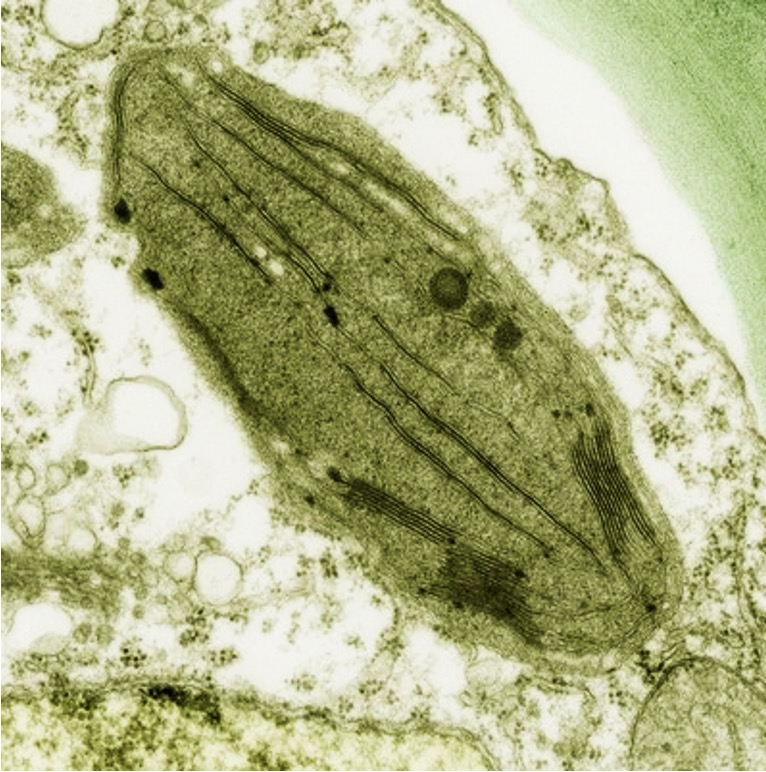
Transmission EM
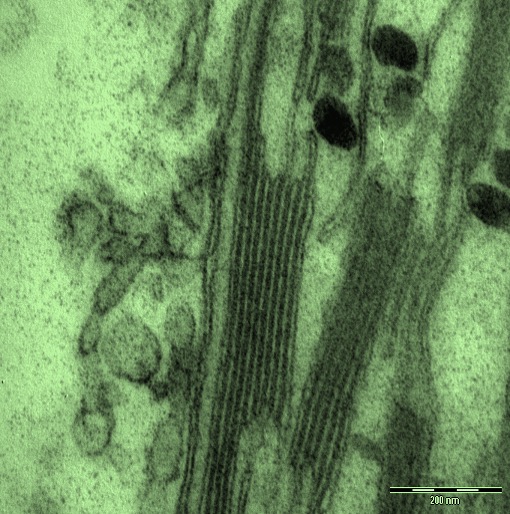
Magnified Image
When a photosystem absorbs light energy, delocalised electrons within the pigments become energised or ‘excited'
-
The excited electrons are transferred to an electron transport chain within the thylakoid membrane
Electron transport chains consist of several electron-shuttling carrier proteins and the transmembrane enzyme ATP synthase
-
As energised electrons from the photosystems are passed through the chain they lose energy, which is used to translocate protons from the stroma into the thylakoid
-
This build up of protons within the thylakoid creates an electrochemical gradient, or proton motive force
-
The protons return to the stroma (along the proton gradient) via the transmembrane enzyme ATP synthase (this movement is called chemiosmosis)
-
ATP synthase uses the passage of protons to catalyse the synthesis of ATP (from ADP + Pi) – similar to how a waterwheel generates electricity from the flow of water
-
This process is called photophosphorylation – as light provided the initial energy source for ATP production
Chemiosmosis
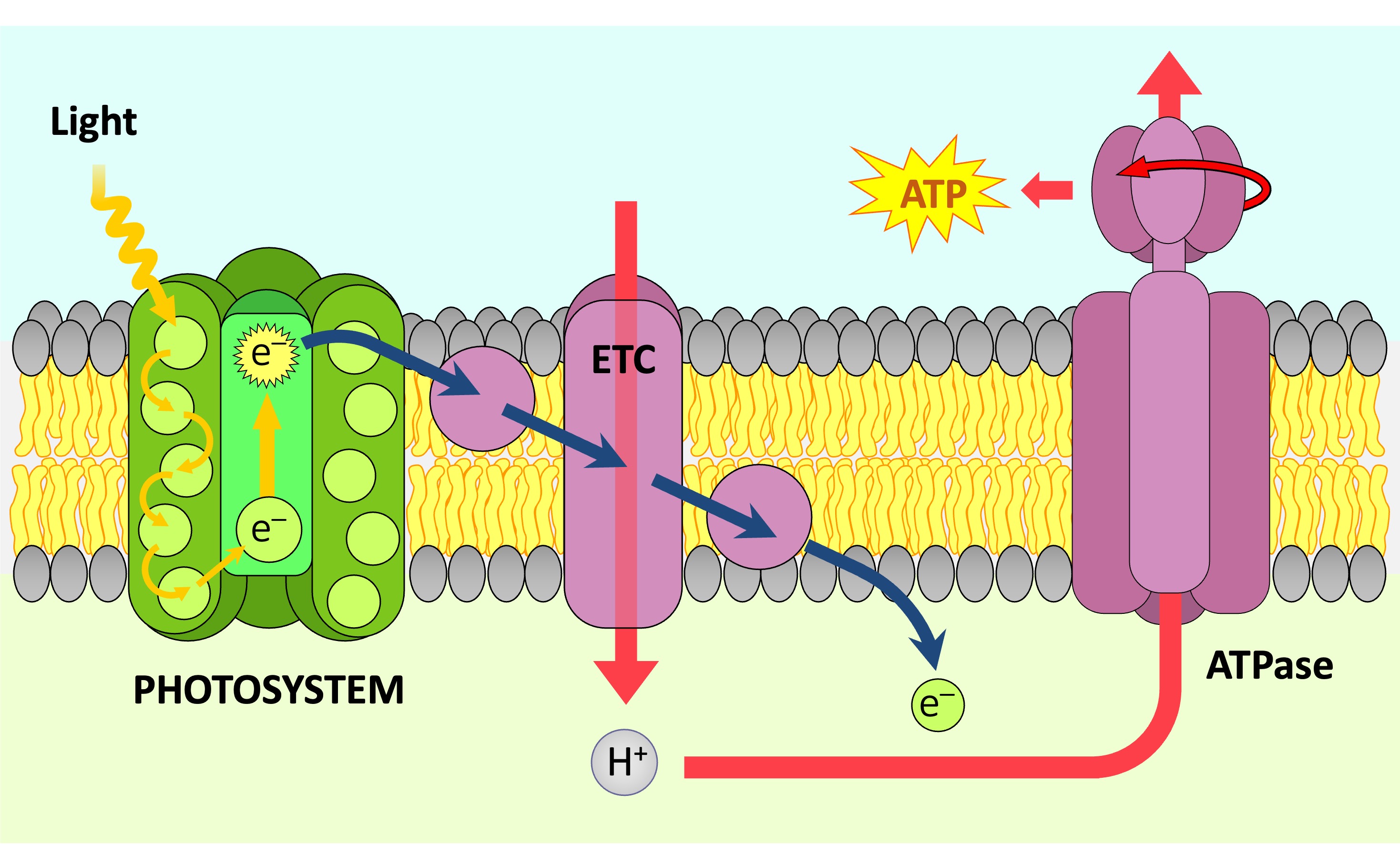
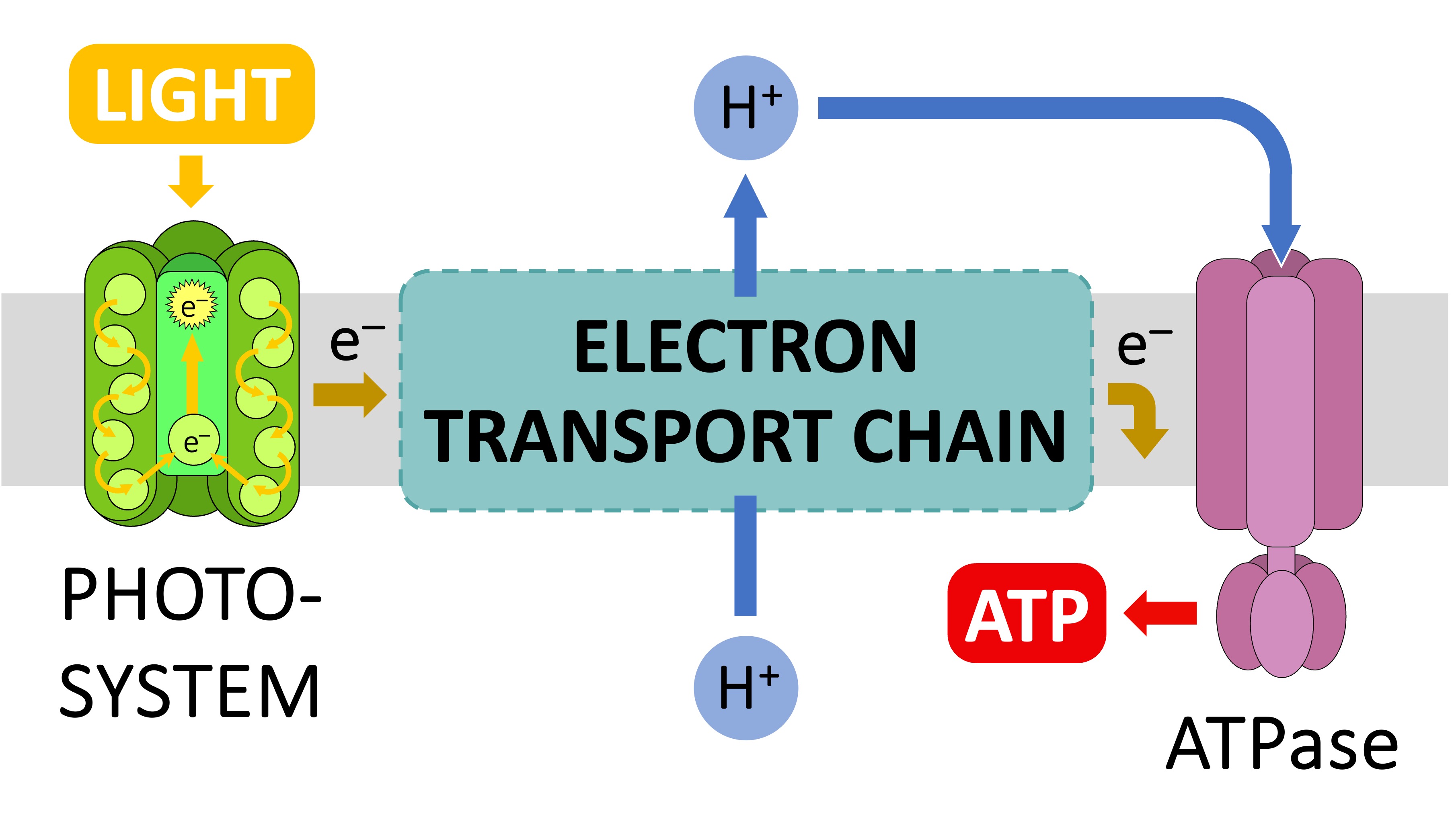
The production of ATP by the light dependent reactions is called photophosphorylation, as it uses light as an energy source
-
Photophosphorylation may be either a cyclic process or a non-cyclic process
Cyclic Photophosphorylation
-
Cyclic photophosphorylation involves the use of only one photosystem (PS I) to generate ATP
-
The energised electrons released from photosystem I are recycled after passing through the electron transport chain
-
This cyclic process can be used to produce a steady supply of ATP in the presence of sunlight, but cannot be used for organic synthesis
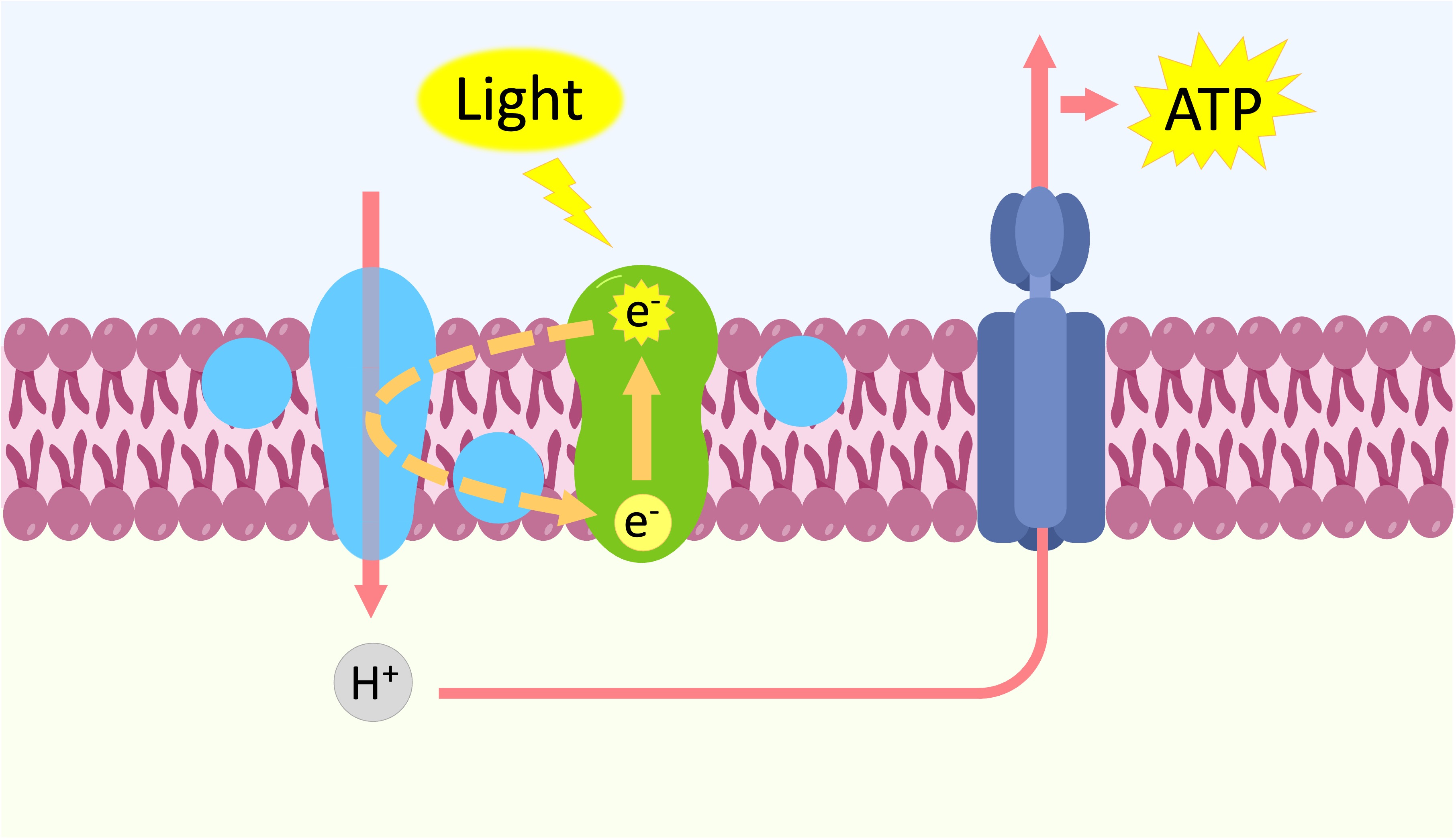
Non-Cyclic Photophosphorylation
-
Non-cyclic photophosphorylation involves the use of both photosystems (PS I and PS II) to generate ATP and NADPH
-
The energised electrons from photosystem I are used to reduce NADP to form NADPH (loaded coenzyme)
-
The lost electrons are replaced by electrons from photosystem II that have passed through the electron transport chain
-
The electrons lost from photosystem II are replaced by electrons generated by the photolysis of water
-
This process is non-cyclic, as the reduction of NADP requires the oxidation of a water molecule
